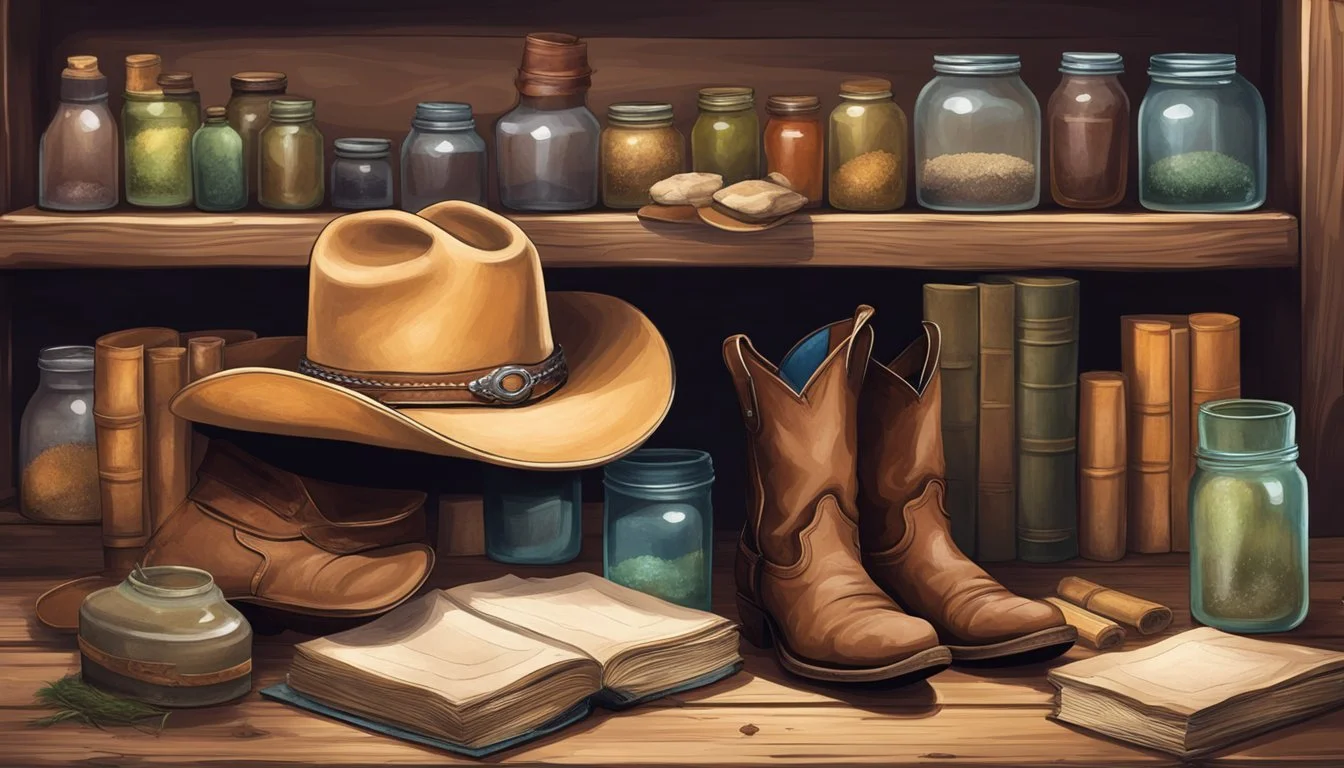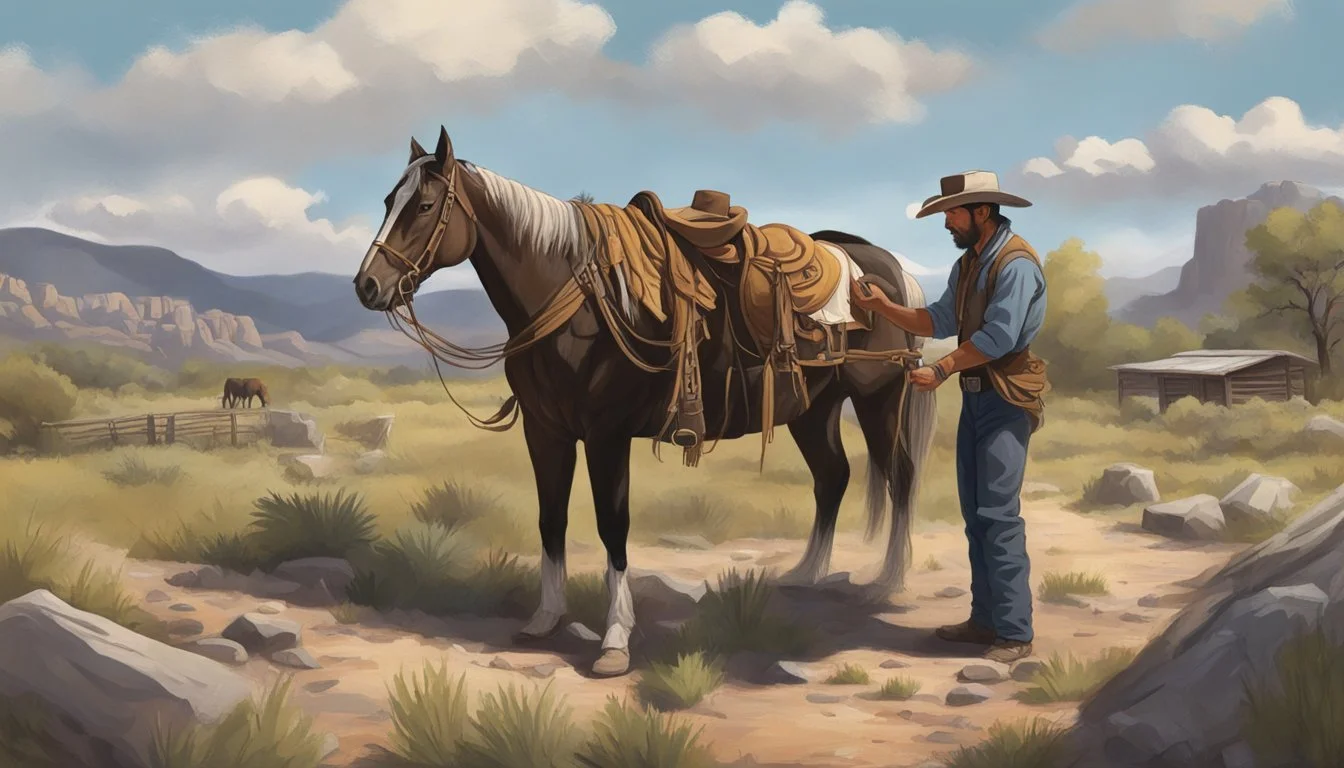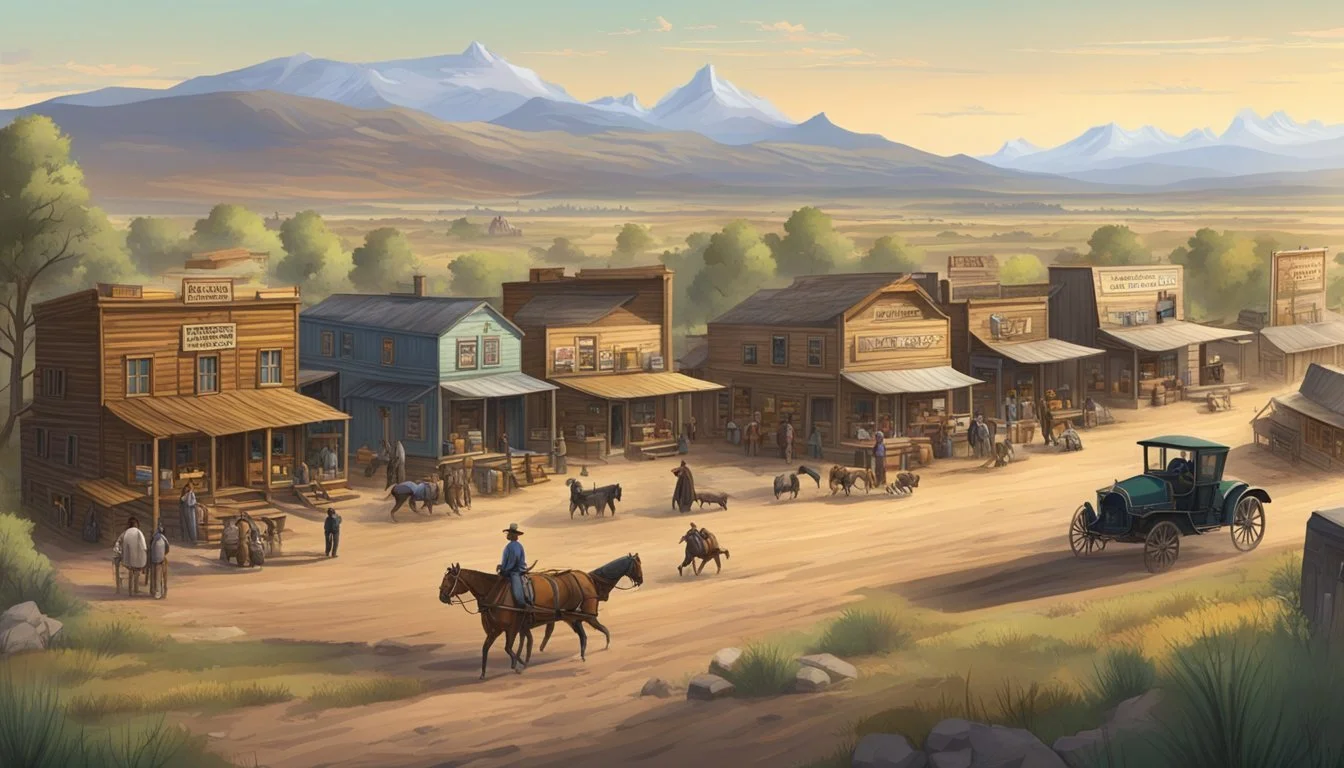The Texas Cowboy's Guide to Home Remedies and Frontier Medicine
Practical Healing Tips
In the vast and rugged expanse of Texas, cowboys have long been emblematic of a culture defined by self-reliance and grit. This lifestyle necessitated a unique approach to healthcare, born out of both necessity and isolation. The Texas cowboy's compendium of home remedies and frontier medicine is a testament to the ingenuity of those who roamed the West. Throughout history, these individuals had to make do with what was available, which led to the evolution of a distinctive tradition in natural healing and medicine.
The medical practices and home remedies of the Texas cowboy were as much a part of their cultural fabric as their reputation for cattle wrangling and horsemanship. Confronted with the perils of frontier life, the cowboy often turned to the natural resources at hand to combat common ailments. Simple yet effective concoctions, like the boiling of onions, garlic, and cinnamon, were not just remedies but a crucial aspect of survival in the harsh conditions of the West.
As settlers moved into the region, Western medicine and formal medical services were scarce, if not completely absent. This scarcity spurred an informal, but comprehensive knowledge of folk medicine, which included an array of plants and herbs endemic to the region, and was as diverse as the cowboys themselves. Cowboys learned to assess and treat injuries, developing an empirical understanding of health and wellness that was shared among their peers, further contributing to the storied legacy of Texas cowboy culture.
Historical Context of the Texas Cowboy
The Texas cowboy emerged as a distinct figure in the landscape of the American West during the 1800s, shaped by events that include the Texas Revolution, interactions with Native American tribes, and the economic changes post-Civil War.
Emergence in the 1800s
In the early 1800s, Texas cowboys, known for their skills in herding and horsemanship, derived much of their traditions from Mexican vaqueros. As cattle ranching became increasingly vital to the economy of Texas, the cowboys of West Texas became emblematic of the region's expansive and rugged terrain.
Texas Revolution and Independence
The Texas Revolution (1835-1836), which resulted in Texas breaking away from Mexico, was pivotal in forming the Lone Star State’s identity. Following the independence, Texans, particularly those in regions like San Antonio and along the Rio Grande, carved out a living through cattle herding, with cowboys playing a critical role in both the economy and the culture.
Conflicts and Cooperation with Native Americans
Texas cowboys had a complex relationship with Native American tribes such as the Kiowas and Comanches. While there were certainly conflicts, particularly as the U.S. Army became increasingly present in West Texas, there were also periods of cooperation, trading, and shared knowledge between the cowboys and Native Americans.
Post-Civil War Expansion
After the Civil War, the United States saw a significant expansion westward. In Texas, this period was marked by the increase of cattle drives and ranching enterprises. Cowboys were integral to the post-war growth and contributed to the development of the American West’s history and identity.
Cowboy Life on the Frontier
The Texas cowboy was an iconic figure symbolizing the rugged endurance required to manage cattle and maintain ranches across the vast, open ranges of the West.
Daily Routines and Duties on the Range
Texas cowboys' daily routines were dictated by the need to tend to vast herds of cattle. Their day began at dawn, with tasks like feeding and inspecting cattle for health issues. They spent daylight hours herding and monitoring the range, ensuring cattle did not stray or fall prey to predators. At night, cowboys took shifts watching over the herd to safeguard against theft and disturbances.
Travel and Trail Drives
Trail drives were a significant aspect of cowboy life, often requiring travel over hundreds of miles from Texas ranches to railway heads in Kansas. Cowboys drove cattle across diverse terrains, crossing rivers and plains. They ensured the herd's safety from rustlers and storms, and they navigated the dangers of the trail both day and night.
Ranching Operations and the Roundup
During the roundup, cowboys gathered cattle from the open range for counting, sorting, and branding. This semi-annual event required coordination among cowboys to herd the scattered cattle into a central location. The operations involved in the roundup were critical to managing cattle ownership and preparing for market or trail drives.
Community and Social Life
Cowboys often sought respite from their arduous duties in nearby towns, where community and social life flourished. They partook in local arts, enjoyed music, and sometimes settled down with a good book after a long trail drive. Despite their tough exterior, the social gatherings provided them with a sense of belonging and a chance to connect with fellow cowboys.
Frontier Medicine and Home Remedies
In the vast expanse of the American frontier, traditional medical care was often scarce, necessitating innovative and resourceful home remedies. Settlers, cowboys, and Native Americans alike contributed to a unique compendium of treatments for common illnesses and injuries.
Common Ailments and Injuries
On the frontier, common health issues ranged from coughs and colds to more serious injuries like burns and bone fractures. Due to the limited access to professional medical care, many relied on their own knowledge or that of a local "Dr. Mom" to treat these afflictions. Felon, a painful infection of the finger or thumb, was another regular complaint often addressed with home treatments.
Ailment/Injury Common Treatment Cough Herbal teas, honey, and strong liquor like whiskey Burns Soothing poultices, aloe vera, and cool water Fractures Splinting with available materials and rest Felon Warm compresses and lancing if necessary
Herbal Remedies and Native American Influence
The use of herbal remedies was extensive on the frontier, borrowing heavily from Native American practices. Plants like echinacea, willow bark (a natural source of aspirin), and comfrey were used for their medicinal properties. Onions, for example, were valued for their antiseptic qualities and often incorporated into poultices.
Herb/Plant Medicinal Use Echinacea Boosting the immune system Willow Bark Pain relief Comfrey Healing wounds and broken bones Onions Antiseptic in poultices
Role of Whiskey, Poultices, and other Treatments
Whiskey served a dual role on the frontier – as a means to sterilize wounds and as a numbing agent during procedures or for pain management. Poultices made from bread, milk, or mashed herbs provided heat to an affected area, which was believed to draw out infection. The heat generated from these poultices was a key element in their perceived effectiveness.
Whiskey: Used for pain, cleaning wounds, and as cough suppressant.
Poultices: Applied to draw out infection and provide heat to the area.
Heat: Often applied through various methods to soothe and treat injuries.
These methods, while not scientifically proven by today's standards, were born of necessity and became part of the frontier's medical landscape.
Cultural Impacts and Evolution of the Texas Cowboy
The Texas cowboy has evolved from a figure of necessity during frontier times into a widely celebrated symbol of American culture, leaving a lasting imprint on various forms of art, entertainment, and heritage preservation.
Evolution of Rodeo and Cowboy Arts
The transition from cattle herding to competitive spectacle marked a significant evolution in cowboy culture. The rodeo, originally an informal competition of ranching skills, has become a formalized sport showcasing the arts of roping, riding, and bronc-busting. These skills, refined over generations, are epitomized in modern rodeo events such as:
Bull Riding: The rider must stay atop the bucking bull for a specified duration.
Steer Wrestling: This event involves the cowboy riding alongside and then wrestling a steer to the ground.
Team Roping: Two cowboys work together to rope a steer as quickly as possible.
Influence on Music, Literature, and Film
Cowboys have been immortalized in various cultural mediums, shaping perceptions both within and beyond Texas. Country music frequently draws upon the cowboy lifestyle for its themes, while Western novels and poetry reflect the struggles and triumphal moments of the Old West. Texas cowboys have also been central characters in countless films, painting a picture of heroism and grit that is synonymous with the Wild West. This has resulted in a rich tapestry of media, including:
Music: Songs like "Deep in the Heart of Texas" resonate with cowboy imagery.
Literature: Authors like Larry McMurtry detail cowboy lives in novels such as "Lonesome Dove."
Film: Classic Westerns like "Red River" depict the challenges of life on the frontier.
Living History and Museums
Living history events and museums preserve the legacy of the Texas cowboy and offer educative insights into their daily lives. They offer authentic representations of ranch activities, costumes, and tools, allowing visitors to experience the cowboy heritage firsthand. Notable institutions include:
Fort Worth Stockyards: Where one can witness cattle drives and visit the Texas Cowboy Hall of Fame.
George Ranch Historical Park: Features historic homes and demonstrations of cowboy life.
The National Cowboy & Western Heritage Museum: Which showcases art, history, and memorabilia of the cowboy era.
Living history venues ensure that the Texas cowboy's culture and traditions remain accessible and continue to inform future generations.
Cattle and Ranching Economy
In 19th century Texas, the cattle and ranching economy was a crucial component of the state’s development, shaping both the physical landscape and the cultural identity. From the tough, resilient Longhorn cattle to the sprawling King Ranch, Texas's history is deeply connected to its ranching roots.
Breeds of Cattle and the Rise of the Longhorn
The Longhorn cattle became emblematic of Texas ranching due to their adaptability to the harsh environment of the prairie. This breed's distinctive qualities include:
Resilience: Able to withstand both drought and disease.
Self-sufficiency: Known for foraging on sparse vegetation.
King Ranch, one of the largest ranches in North America, played a role in advancing cattle breeding by importing and breeding Brahman cattle with shorthorn breeds to improve stock resilience.
The Economics of Cattle Drives
Cattle drives were integral to the Texas ranching economy and involved:
Work: Moving thousands of head of cattle north to railheads.
Meat Production: Providing beef to meet growing demand in the East.
The drives were challenging but economically rewarding as they capitalized on the price difference between Texan cattle worth $4 in Texas and up to $40 at the northern markets.
Impact of Ranching on the Texas Landscape
Ranching had a significant impact on Texas's landscape, with consequences such as:
Overgrazing: Which led to changes in the prairie ecosystem.
Land Use: Transformation from open range to fenced pastures to better manage livestock.
Overall, the cattle and ranching economy was not just about the iconic cowboy image, but it was a complex system that played a pivotal role in carving the economic future of Texas.
Settlement and Societal Development
As settlers ventured into Texas, the landscape of the region underwent significant changes that shaped its societal development. From the alteration of land use to drastic shifts in governance, this period was marked by pivotal transformations.
Settler and Native American Relations
Texas settlers often found themselves in close proximity to various Native American tribes, including those residing at Fort Belknap in the Indian Territory. These interactions were complex, involving both cooperation and conflict. Disputes over land and resources sometimes led to tension and violence, necessitating negotiations between tribes like the Comanche and federal government representatives to establish peace and territorial agreements.
The Impact of Railroads and Barbed Wire
The advent of railroads and the introduction of barbed wire revolutionized the Texas frontier. Railroads facilitated the movement of goods and people, significantly impacting the settlement patterns and economic development. Barbed wire, an invention critical to the cattle industry, allowed settlers to delineate and protect their land, fundamentally altering the open ranges that were once free for herds to roam.
Railroads:
Increased settlement
Boosted local economies
Barbed Wire:
Enabled private land ownership
Restricted cattle drives
Statehood, Law, and Order
Texas' journey to statehood in 1845 brought about an era of formalized law and order. The federal government played a crucial role in this transition, turning a once lawless frontier into regulated territories. With statehood came structured legal systems and enforcement mechanisms designed to manage the growing population and secure the settlers' land rights.
Enduring Legacy and Modern Reflection
The iconic image of the Texas cowboy stands as a symbol of American culture, reflecting a historical narrative deeply intertwined with ranches and cattle. Contemporary society both preserves and adapts these traditions within a landscape faced with new challenges.
The Cowboy Image in Modern America
In modern America, the cowboy image persists as a representation of rugged individualism and self-reliance. Photographs of cowboys on horseback, herding cattle across vast ranches, continue to be a staple of American iconography. The influence of cowboy culture is pervasive, seen in fashion, entertainment, and even corporate motifs, suggesting a connection to qualities such as bravery and integrity.
Preservation of Cowboy Traditions
Many ranches across Texas strive to maintain the authenticity of cowboy traditions. Practices originating from vaqueros, the precursors to the cowboys, such as expert horsemanship and cattle herding, are still taught and revered. The Goodnight-Loving Trail, established by Charles Goodnight, remains a legendary route that symbolizes the ingenuity and determination of cowboys who drove cattle northward.
Contemporary Challenges in Ranching
Ranching today faces a set of contemporary challenges that test the adaptability and resourcefulness of the cowboy spirit. Environmental issues, economic pressures, and land development result in diminished open ranges and emphasize the need for sustainable practices. Ranchers employ modern techniques alongside traditional wisdom, using fences to manage grazing and deploying technology to monitor herd health, ensuring that the cowboy legacy endures amidst change.







